

Table of contents
- humidifier
- air cleaner
Indoor plants in the office bring a number of advantages as they improve the indoor climate. They increase the humidity, can serve as a natural room divider or are used as air purifiers.
humidifier
While all plants release moisture into the environment through evaporation, some contribute more to increasing humidity levels in the office than others. Therefore, they are considered natural humidifiers for dry air or heating air.
areca palm(Areca catechu)
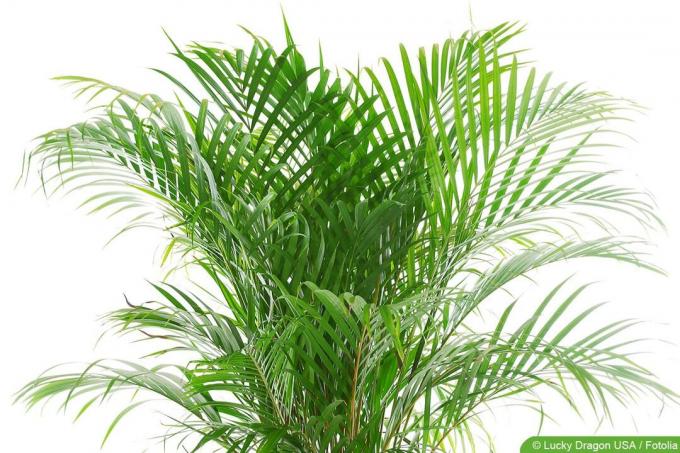
- another common name: betel nut palm, betel palm, catechu palm
- Location: bright, but not in full sun
- Minimum temperature: 15 degrees Celsius
- slightly demanding plant
- Watering: regularly and plentifully
- Fertilize: every two weeks (May to September)
bamboo palm(Chamaedorea seifrizii)
- Location: sunny to shady
- Minimum temperature: 10 degrees Celsius
- undemanding plant
- Watering: regularly
- Fertilize: every two weeks (March to September)
bow hemp(Sansevieria trifasciata)

- another trivial name: mother-in-law's tongue
- Location: bright, also tolerates direct sunlight
- Minimum temperature: 15 degrees Celsius
- extremely frugal office plants
- Watering: regular, copes well with dry periods
- Fertilize: every four weeks (May to October)
A notice:
Heating air and dry air do not bother the bow hemp.
dragon tree(dracaena)

- Location: warm and bright, after acclimatization also direct sun
- Minimum temperature: 10 degrees Celsius
- easy to care for and robust plant
- available in many varieties
- Watering: sparingly
- Fertilize: every two weeks (April to October)
ivy(Hedera)
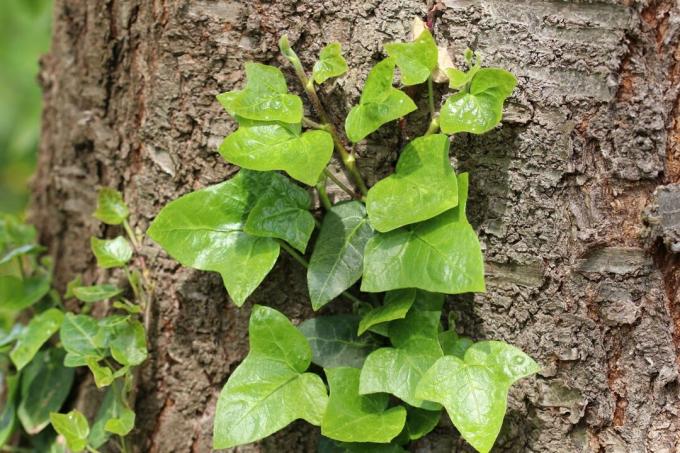
- Location: bright, without direct sunlight
- Minimum temperature: 10 degrees Celsius
- robust and easy-care plant
- Watering: regularly
- Fertilize: every two weeks (April to September)
window leaf(Monstera)
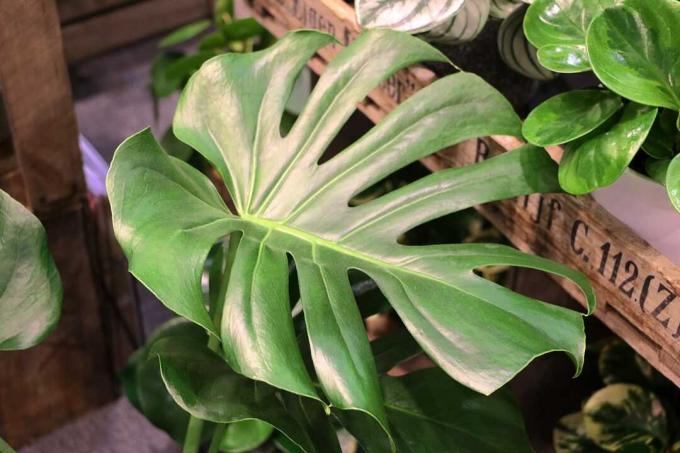
- Location: bright, suitable for the north window
- Minimum temperature: 18 degrees Celsius
- robust and easy-care houseplants
- Watering: regular, moderate
- Fertilize: every two weeks (April to the end of August)
lucky chestnut(Pachira aquatica)
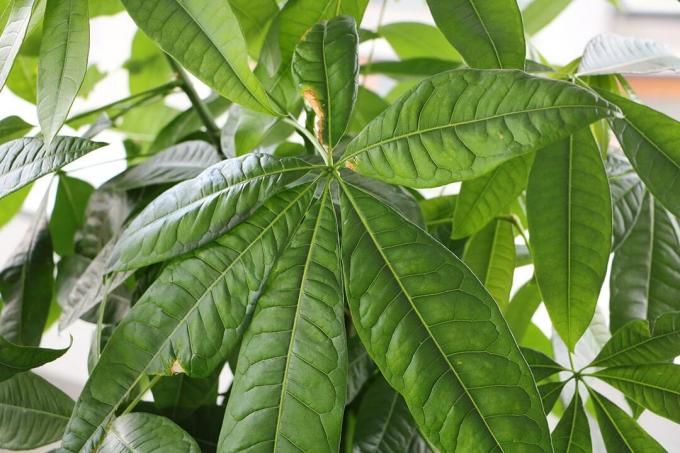
- Location: warm and bright (no blazing sun)
- Minimum temperature: 12 degrees Celsius
- robust and easy-care plant, copes well with dry periods
- very dry air is badly tolerated
- Watering: not too often, but extensively
- Fertilize: every two weeks (April to September)
golden fruit palm(dypsis lutencens)

- other trivial names: areca palm
- Location: bright, but not in full sun
- Minimum temperature: 16 degrees Celsius
- easy-care office plant
- Watering: regularly and plentifully
- Fertilize: every two weeks (April to October)
rubber tree(Ficus elastica)

- Location: sunny to semi-shady, also suitable for a north-facing window
- Minimum temperature: 16 degrees Celsius
- extremely robust plant
- Watering: needs little water
- Fertilize: every two to three weeks (April to October)
cobbler palm(Aspidistra)
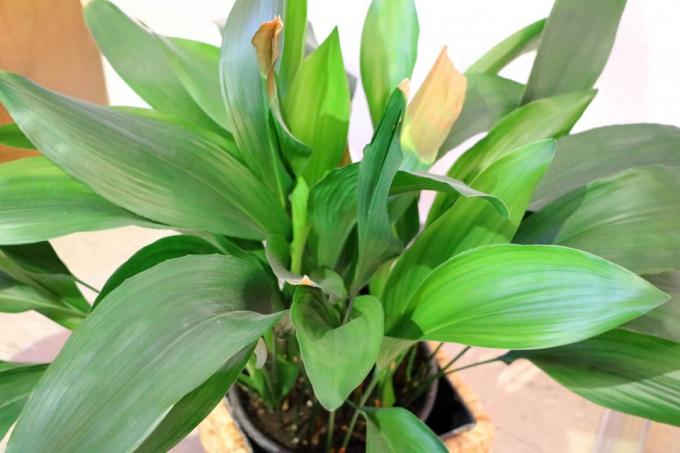
- other trivial names: butcher palm
- Location: bright to shady, suitable for the north window
- Minimum temperature: 12 degrees Celsius
- undemanding indoor plants
- Watering: regularly at longer intervals
- Fertilize: every four weeks (April to October)
Radiation Aralia(Schefflera)

- other trivial names: finger aralie
- Location: bright to semi-shady, no direct sun
- Minimum temperature: 10 degrees Celsius
- undemanding office plants
- Watering: regularly, moderately, do not allow to dry out
- Fertilize: every now and then
spleen ferns(asplenium)

Within the spleen ferns, nest fern (Asplenium nidus) and spleen fern (Asplenium antiquum) are the best natural humidifiers against dry heating air in winter.
- Location: bright to semi-shady, no blazing midday sun
- Minimum temperature: 16 degrees Celsius
- robust and easy-care houseplants
- Watering: regular, tolerates shorter periods of drought
- Fertilize: every four weeks (April to September)
dwarf date palm(Phoenix roebelenii)
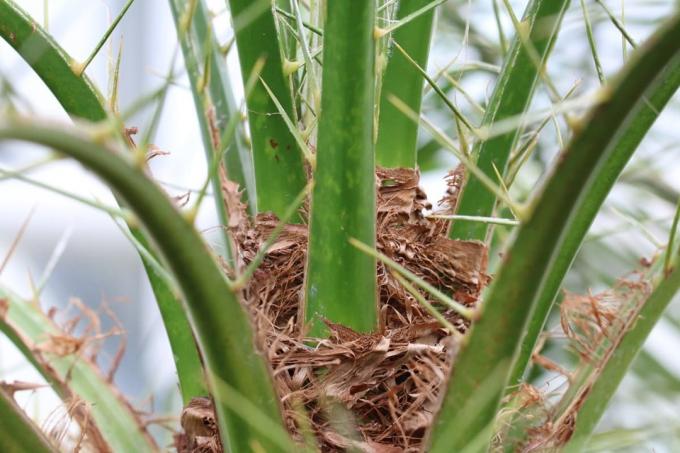
- Location: bright (no direct sun) to semi-shady
- Minimum temperature: 16 degrees Celsius
- robust and easy-care plant
- Watering: does not need much water
- Fertilize: every two to four weeks (March to September)
room linden(Sparmannia)

- Location: bright, without direct sunlight
- Minimum temperature: 10 degrees Celsius
- extremely easy to care for plant
- Watering: plentiful
- Fertilize: once or twice a week (April to September)
air cleaner
In addition to natural air humidifiers, there are a number of office plants that are supposed to clean the air and thus contribute to a better indoor climate.
Dieffenbachia(Dieffenbachia camilla)

- Location: light to semi-shady, no direct midday sun
- Minimum temperature: 15 degrees Celsius
- hardy office plants
- Watering: regularly, avoid extreme dryness and wetness; shorter dry periods are tolerated
- Fertilize: weekly (April to August)
A notice:
The Dieffenbachia is poisonous.
Real Aloe(aloe vera)
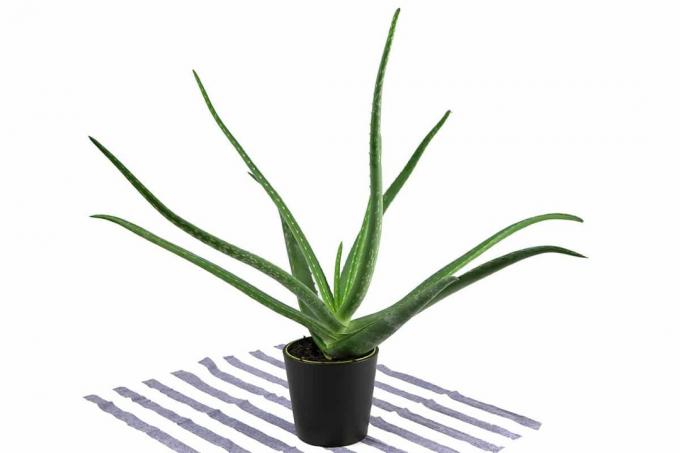
- Location: warm and sunny
- Minimum temperature: 15 degrees Celsius
- robust and easy-care plant
- Watering: needs little water
- Fertilize: every four weeks (April to September)
ivy(epipremnum)
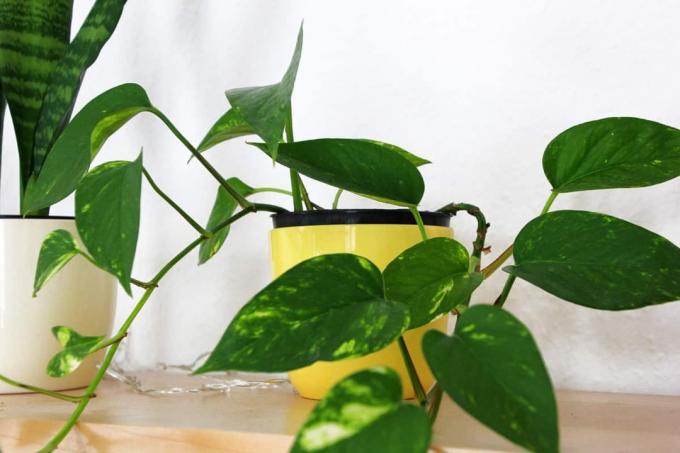
- other trivial names: Tonga plant, gold tendril
- Location: bright to semi-shady
- Minimum temperature: 16 degrees Celsius
- robust and easy-care climbing and traffic light plant
- Watering: regularly
- Fertilize: every three weeks (March to October)
A leaf(Spathiphyllum)

- Location: light to semi-shady, no direct midday sun
- Minimum temperature: 13 degrees Celsius
- dry air (air conditioning) is not so well tolerated
- robust and easy-care plant
- Watering: regular, moderate
- Fertilize: every four weeks (April to September)
flamingo flower(anthurium)
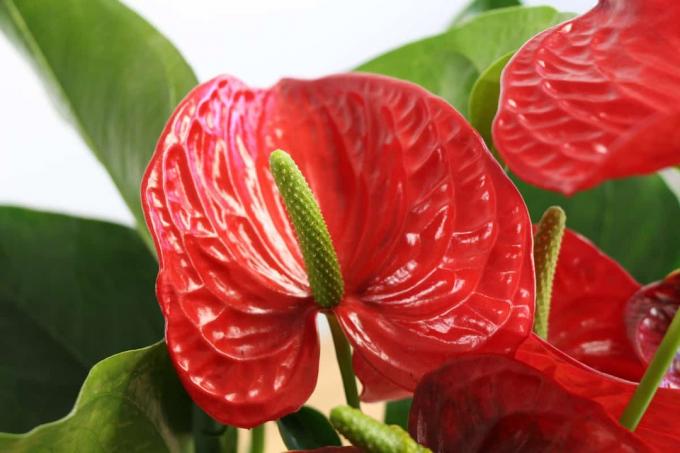
- Germanized Anthuriums
- Location: light to semi-shady, no direct sun, no draughts
- Minimum temperature: 16 degrees Celsius
- slightly demanding plant
- Watering: plentifully, do not let dry out
- Fertilize: every two weeks (April to September)
lucky feather(Zamioculcas zamiifolia)
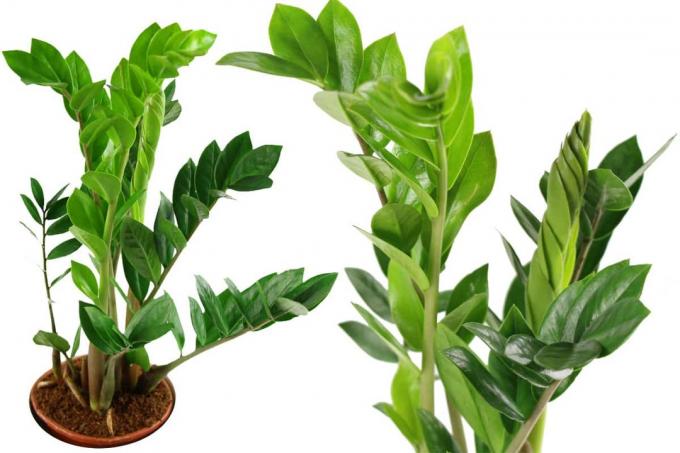
- other trivial names: Zamie
- Location: bright (no blazing sun) to shady
- Minimum temperature: 16 degrees Celsius
- easy-care indoor plants
- Watering: regularly, always keep slightly moist
- Fertilize: every four weeks (April to October)
spider plant(Chlorophytum comosum)
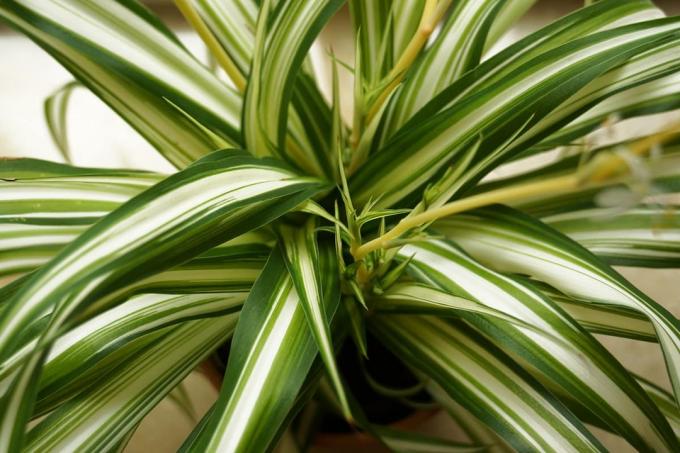
- other trivial names: official grass, official palm
- Location: sunny to shady (no special requirements)
- ideal for the window sill or the traffic light
- Minimum temperature: 10 degrees Celsius
- frugal plant
- watering: regular and plentiful; copes well with dry periods
- Fertilize: every two to three weeks (April to October)
Kentia palm(Howea)
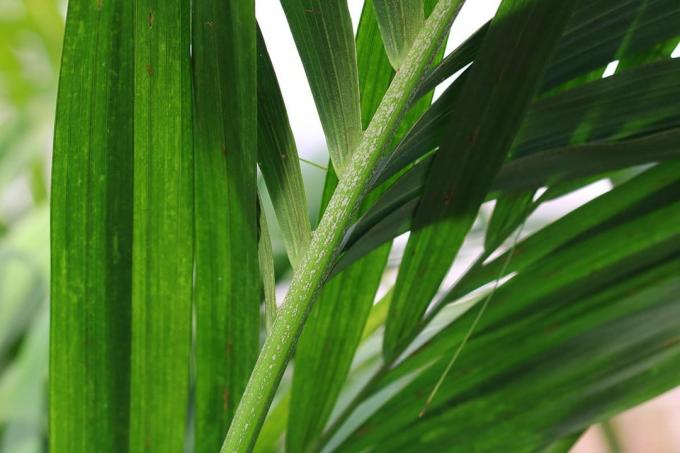
- Location: bright to semi-shady
- Minimum temperature: 15 degrees Celsius
- undemanding plant
- Watering: regularly
- Fertilize: every two weeks (May to the end of August)
Climbing philodendron(Philodendron scandens)

- other common names: Spiked Tree Friend, Climbing Philodendron
- Location: shady to semi-shady
- Minimum temperature: 15 degrees Celsius
- easy-care traffic light or climbing plant
- Watering: keep moderately moist
- Fertilize: every two weeks (April to October
clivia(Clivia miniata)
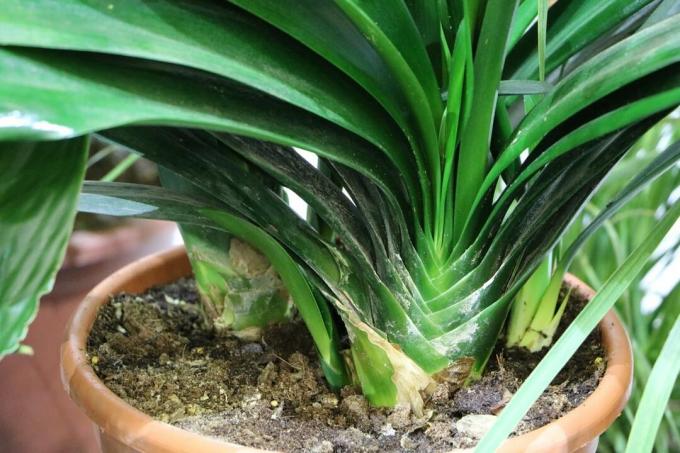
- Location: bright to semi-shady, no direct sun
- Minimum temperature: 15 degrees Celsius
- robust and easy-care plant
- Watering: always keep slightly moist
- Fertilize: every two weeks (April to October)
Tip:
If the clivia feels good, it thanks it with orange flowers.
cob thread(Aglaonema)
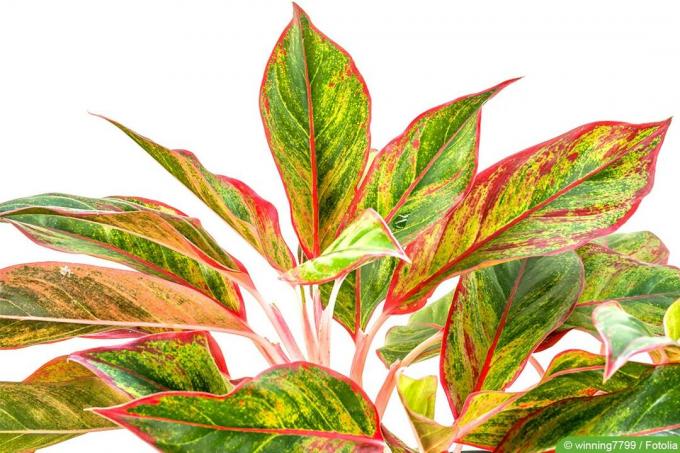
- Location: bright (without direct sunlight) to shady
- Minimum temperature: 18 degrees Celsius
- undemanding plant
- Watering: regular, tolerates short periods of drought
- Fertilize: every four weeks (March to early November)
A notice:
The butt thread does not like to stand alone.
Mexican mountain palm(Chamaedorea elegans)
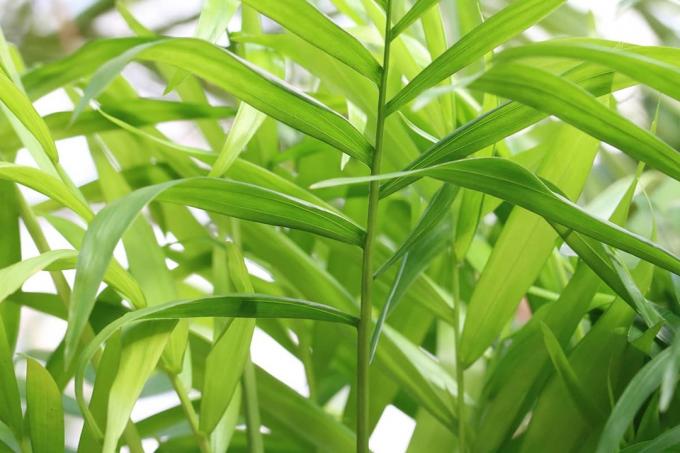
- Location: bright to slightly sunny
- Minimum temperature: 15 degrees Celsius
- undemanding plant
- Watering: regularly and plentifully
- Fertilize: every four weeks (May to September)
arrowroot(Maranta leuconeura)
- Location: semi-shady to shady, suitable for a north-facing window
- Minimum temperature: 15 degrees Celsius
- undemanding plant
- Watering: always keep slightly moist
- Fertilize: once between September and February
Giant palm lily(Yuca elephantipes)
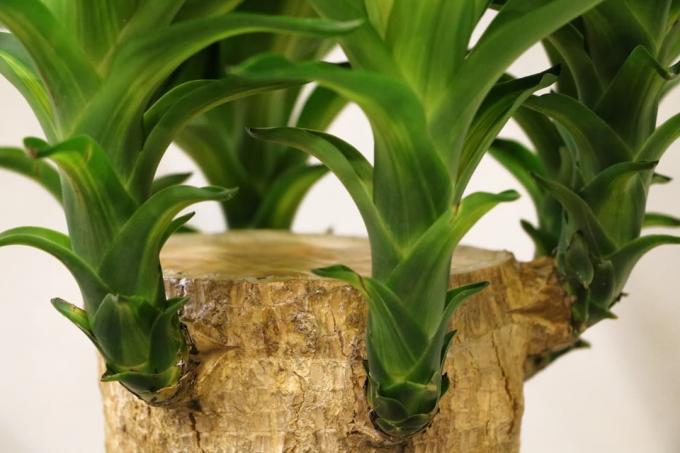
- Location: warm and bright, no direct sunlight
- Minimum temperature: 12 degrees Celsius
- undemanding office plants
- Watering: always keep slightly moist, tolerates shorter periods of drought
- Fertilize: weekly (April to September)
stick palm(Rhapis excelsa)

- Location: bright to semi-shady, morning or evening sun
- Minimum temperature: 10 degrees Celsius
- easy-care plant
- Watering: regularly and extensively
- Fertilize: every two weeks (April to September)
ufo plant(Pilea peperomioides)

- Location: light to semi-shady, without direct sunlight
- Minimum temperature: 15 degrees Celsius
- robust and easy-care plant
- Watering: keep moderately moist
- Fertilize: every two weeks (March to September)
 garden editorial
garden editorial I write about everything that interests me in my garden.
Learn more about grooming

send plants | 7 tips for sending flowers
Sending plants requires good preparation. Not only the type of packaging is of great importance, so that the goods arrive safely at their destination. The season is also important. It depends on how well the plants survive the transport.
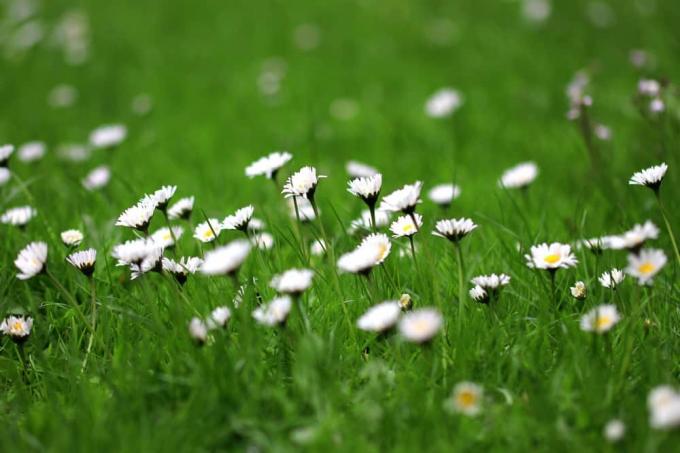
21 edible flowers | What flowers can you eat?
Edible flowers can be used for many dishes in the kitchen, not just as decoration. The flavors range from sugary-sweet to peppery-spicy and give food and drinks a very special touch.
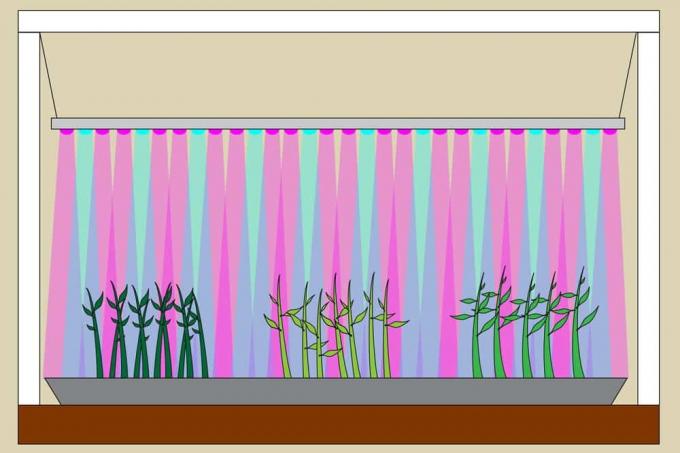
Everything about LED plant lights: Build plant lights yourself
Plants need light. In the absence of it, they suffer or perish. Sometimes, conventional daylight just isn't enough to meet a plant's light needs. Then LED plant lighting can help. How to build such a plant light yourself is here.

Shade plants: 17 green and flowering plants for the shade
Shady garden areas are a challenge for every hobby gardener, although shade does not mean that it is completely dark. Partial shadow and light shadow are also a type of shadow. The range of suitable plants is growing steadily and offers a variety of design options.
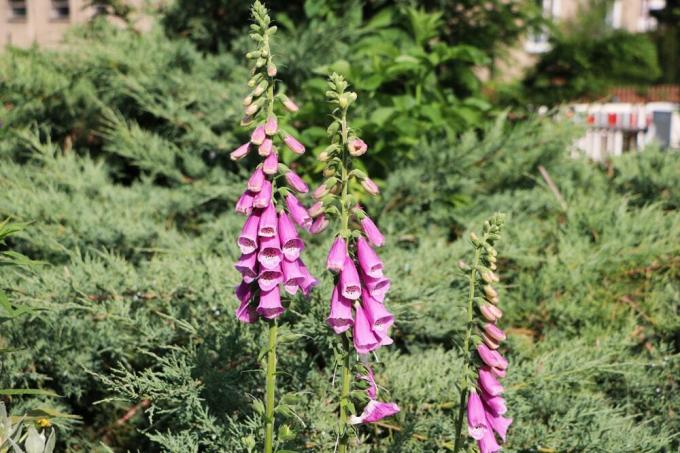
Forest flowers: 55 flowering species in the forest sorted by color
When the local forests dress in picturesque shades of color throughout the year, the numerous forest flowers in Germany present themselves and inspire with their blaze of colour. From purple to red to white and yellow, the German forests have a lot to offer.

Scented plants: list from A-Z for garden, apartment and balcony
Flowers, bushes and trees not only set color accents in the garden or inspire with their magnificent growth, they spoil the nose with their scent. Humans have always been attracted to fragrant plants and kept them close by.
